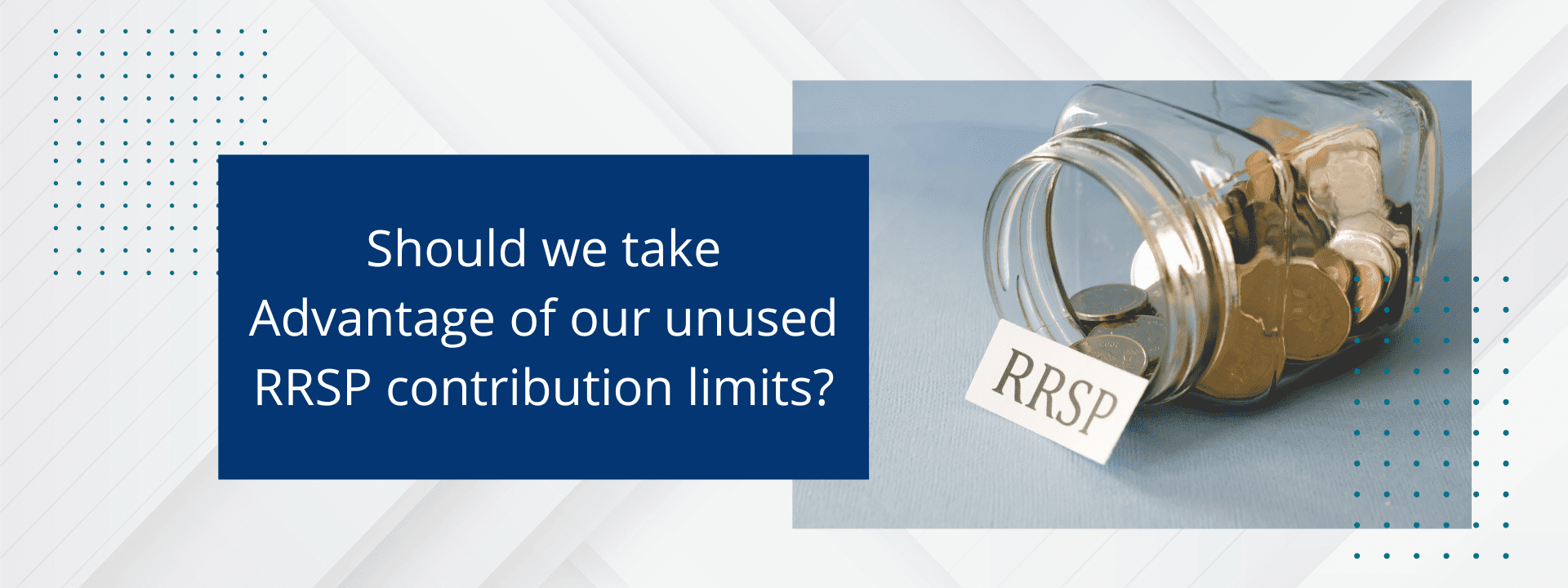Excerpts from the Book – Preserving Wealth – written by Jack Lumsden, MBA, CFP®
A common question that we receive every year prior to the RRSP deadline is should we take advantage of our unused RRSP contribution limits?
Your RRSP deduction limit is how much you can contribute to your RRSP based on your prior years income, and includes any unused contribution limits from prior years.
The following excerpt describes this…
Uncle Wayne started off by saying this wouldn’t take any more than forty-five minutes, because he really had to get back to Aunt Jen. Then he told us to pull out our binders or go online to our secure cloud service and look at a tax-related form called a Notice of Assessment. Everyone who files a tax return gets one of these from the Canada Revenue Agency (CRA) every year, but surprise, surprise … Sally couldn’t find hers!
Anyway, the point of checking out this form was to determine our limits for RRSP contributions for the current year, and to determine whether we were able to take advantage of any unused contribution limits from the past.
“Well, Sally, if you can’t find the form, there’s always Plan B. On Monday, you can call the automated TIPS line at the CRA. Just follow the instructions, enter your Social Insurance number, date of birth, plus the figure for your income, which is listed on line 150 of your tax return. They’ll tell you what your RRSP limit is. You can also register with the CRA for their My Account service, which allows you to access your information online.”
“It’s not as if I really cared,” she said softly.
“Well, you should,” Uncle Wayne said, chiding her gently. “This is where you’re going to start. I want everyone to put the maximum allowed this year into their RRSP. And since you’ve got the cash on hand, do it sooner rather than later. For example, if Sally were to contribute $10,000 a year to her RRSP at the beginning of each year, as opposed to the end of each year, by age sixty-five at a 6.6% annual return, she would have saved $937,312 versus $879,280!”
“I guess RRSPs are a good place to start an investment program, because our money gets tax-sheltered growth,” remarked Alice. “But what if we have a large RRSP room? Should we use the tax deduction in our tax return in one year?”
“It depends on your marginal tax rate. Your accountant should be able to review how much you should deduct each year on your tax return to maximize your tax savings,” added Uncle Wayne.
“I understand I have to pay taxes, but what is a marginal tax rate?” I asked.
Sandra interjected. “From my understanding, Canada operates under a marginal tax rate system, which means that the more money you make, the more income tax you pay on each additional dollar of income. Simply, as your income rises, the tax rate percentage increases as well, and that is called your marginal tax rate.”
For more information you can refer to Preserving Wealth: The Next Generation – The definitive guide to protecting, investing, and transferring wealth by Jack Lumsden, MBA, CFP®
For your FREE Copy CLICK HERE
What To Do Next
Are You on Track with Your Retirement Strategy? FIND OUT TODAY!
For more information, refer to Preserving Wealth: The Next Generation – The definitive guide to protecting, investing, and transferring Wealth by Jack Lumsden, MBA, CFP® or schedule a call with Jack at 905-332-5503
Jack Lumsden is a Financial Advisor with Assante Financial Management Ltd. The opinions expressed are those of the author and not necessarily those of Assante Financial Management Ltd. Please contact him at 905.332.5503 or visit www.jacklumsden.com to discuss your circumstances before acting on the information above.
Insurance products and services are provided through Assante Estate and Insurance Services Inc.




